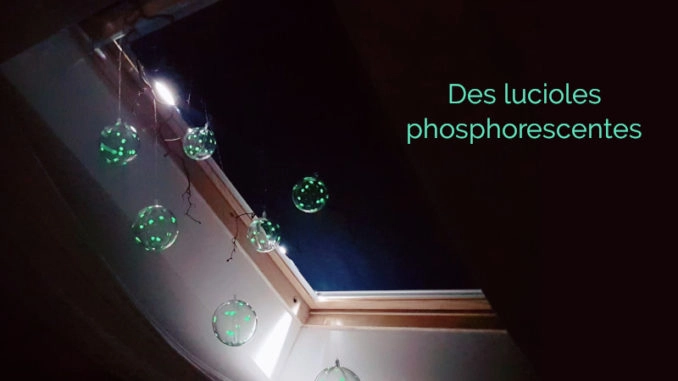
Have you ever watched fireflies? You know, those little bugs that give off a nice green light after dark? Fireflies make light through a chemical reaction in their abdomen. We’re going to make a suspension that glows in the dark thanks to another phenomenon named phosphorescence.
You will need:
- A tree branch
- Phosphorescent painting
- A paintbrush
- Clear plastic Christmas baubles (7-8)
- White sewing thread
- Dishwashing liquid
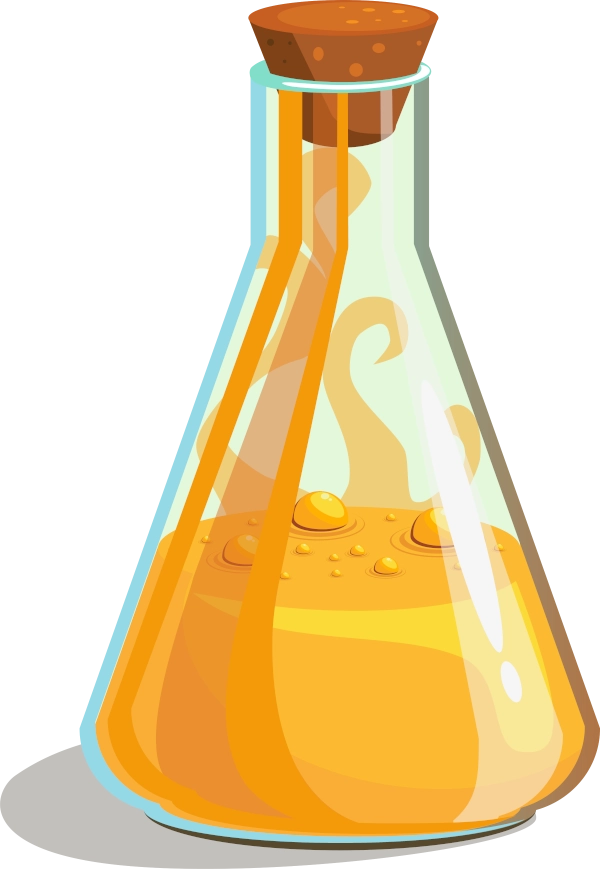
From 6 years

Difficulty : easy

Let's experiment
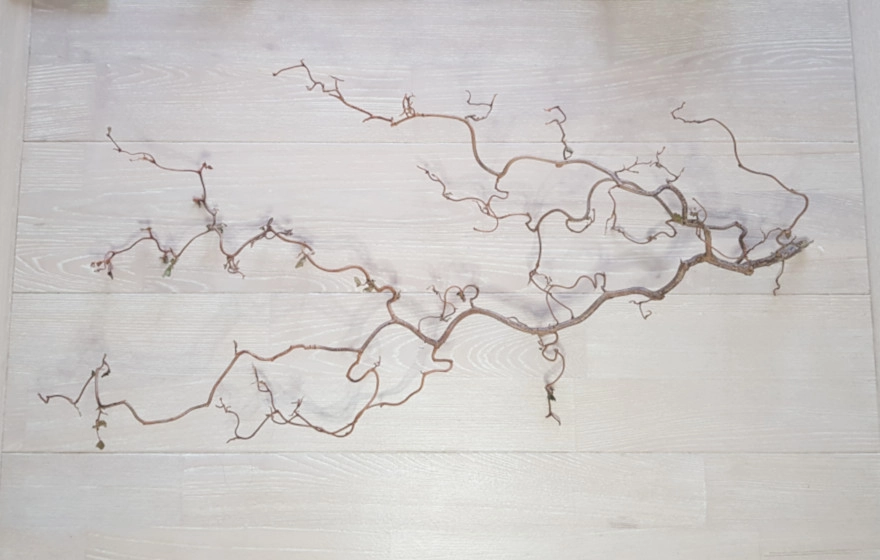

Pick a nice tree branch. We chose a twisted hazelnut branch.
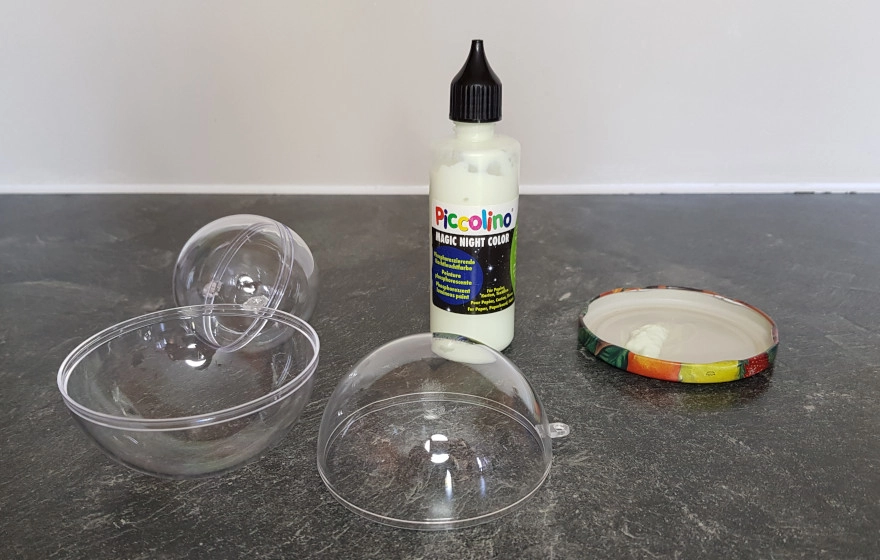

Gather the materials required to create fireflies with the phosphorescent paint
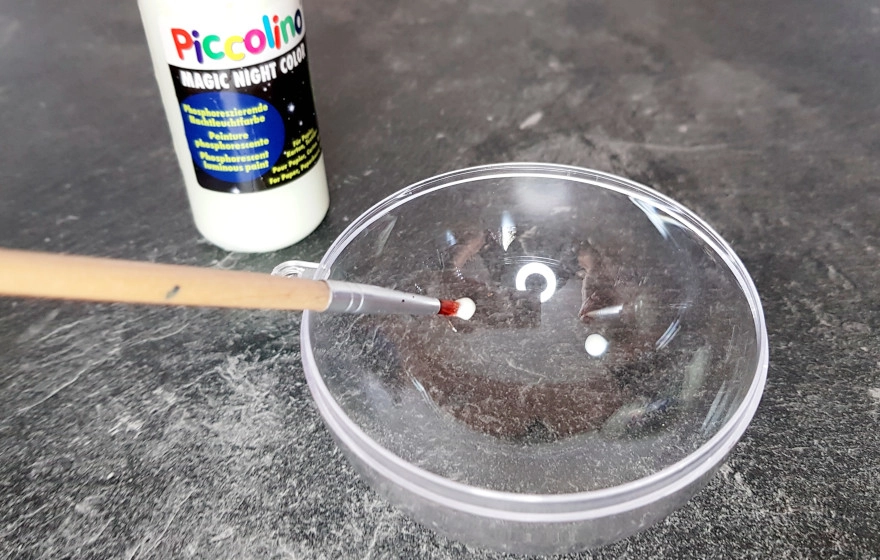

Use your brush to apply small dots of paint to the inside of the plastic baubles.
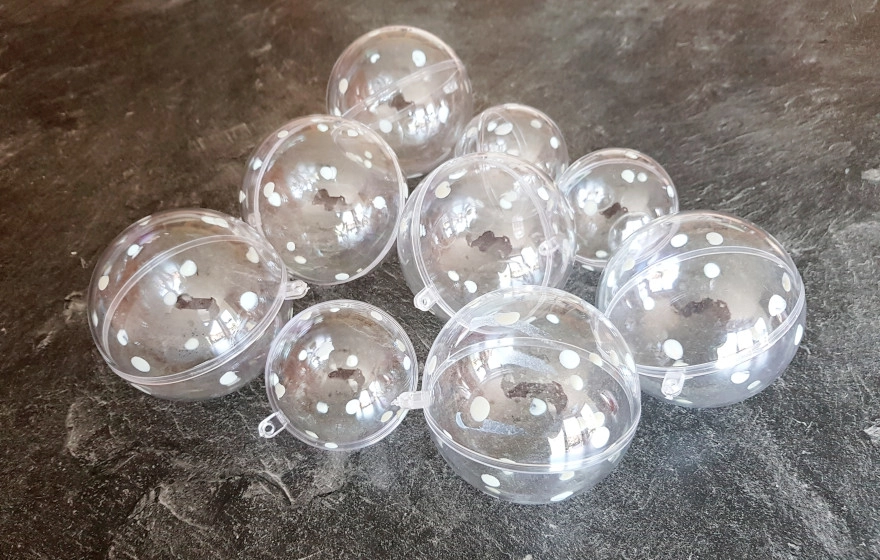

Apply small dots of paint to the inside of all the baubles.

Using the sewing thread, attach the baubles so that they are spaced apart and secure the other end to the tree branch. Be careful, tie a strong knot.

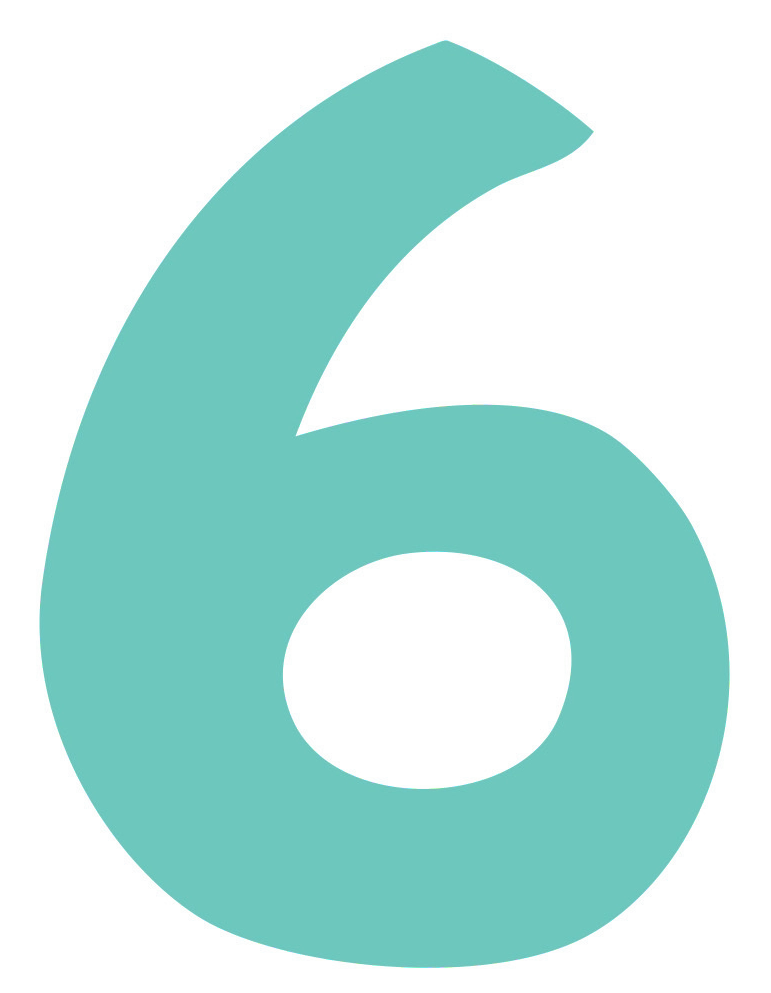
Attach your suspension to your skylight or your garden. And leave it out in the daylight.
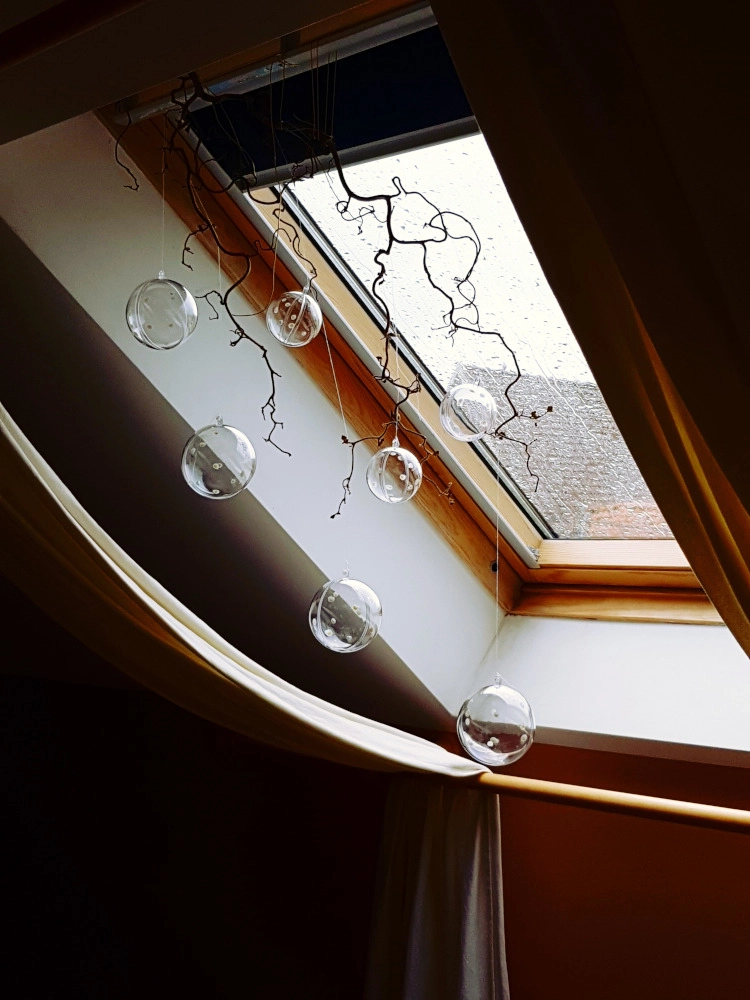

Close the skylight or wait until nightfall to watch the magic happen.
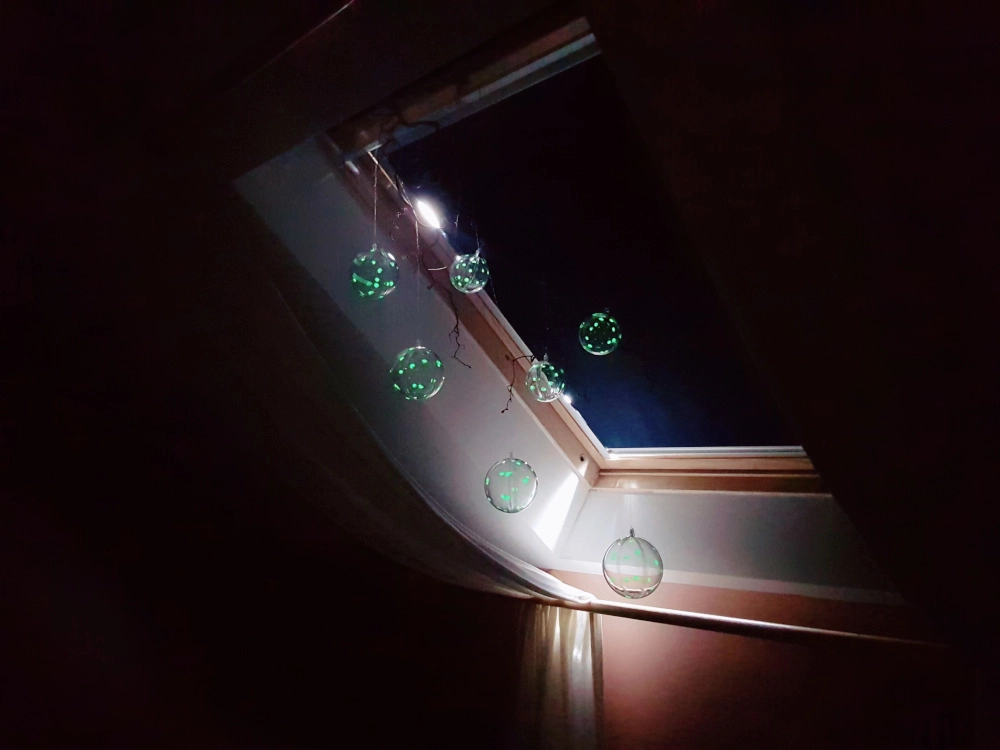
Understand the experiment
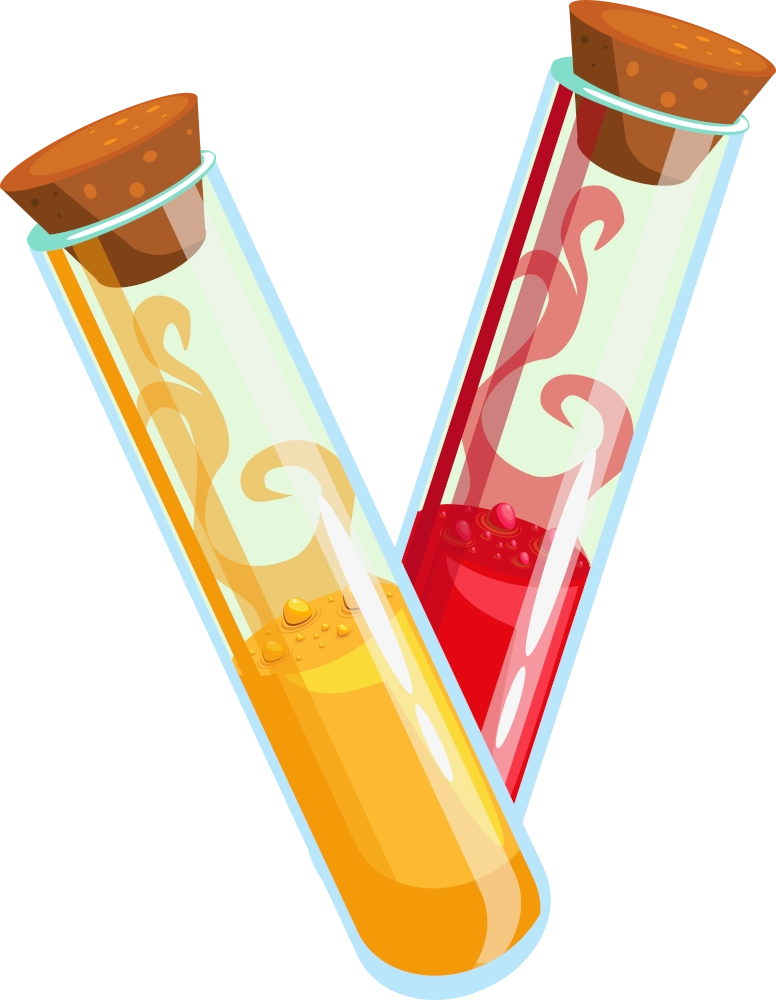
It glows in the dark and without electricity
With this experiment, you observed that your baubles emit light in the dark. However, they are not connected to the electrical circuit of the house. There is no electrical cable either. You didn’t heat them beforehand. But then, where does the energy for this light come from? Amazing, isn’t it?
Phosphorescence
Generally speaking, when an object absorbs light, it immediately releases it. This is called photoluminescence. In practice, you know that matter is made up of elements called atoms. And in atoms, there are electrons that revolve around the nucleus. Light causes these electrons to be “excited”. They release this overflow of energy by emitting light instantly.
However, some objects take a long time to “de-energize”. It is as if the electrons keep the energy longer. They then gradually release it as light. As a result, even when it is dark, the object continues to shine. This is called phosphorescence. The paint you used is phosphorescent paint. By painting your beads and leaving your mobile to the light, you have given them the power to glow in the dark.
How long does it glow?
The current paints allow the light to be released for 14 hours. So you can create nice night lights for your room. These paints are made of strontium aluminate, which allows these paints to shine 10 times brighter and 10 times longer than zinc sulfide, a compound used before 1990. This compound even remains active for more than 10 years, giving you a long-lasting mobile.
Did you know?
Fireflies aren’t phosphorescent!
The firefly is not phosphorescent, nor does it carry a flashlight. If it glows in the dark, it is due to a chemical reaction that releases light. This is called bioluminescence, which is a different mechanism from phosphorescence because the light here is the result of a chemical reaction.
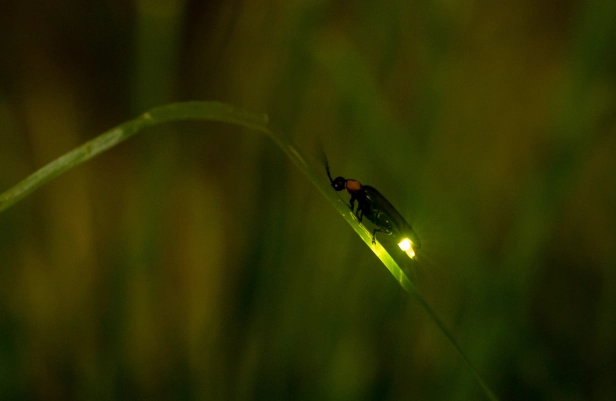
Actually, the firefly has an organ that produces light. The oxygen in the air it picks up reacts with chemicals in its abdomen. Unlike a light bulb, the firefly doesn’t heat up when it shines, and it decides when it emits light.
Challenge
If possible, leave your suspension in the dark for one day. What do you observe?
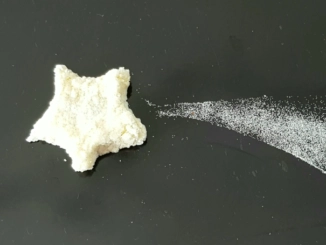
Transform milk into plastic
Did you know that plastic can also be produced from natural resources? The best example is milk! Milk proteins, huge molecules like those in plastics, can, under certain conditions, agglomerate to form a solid. […]

A treasure map with invisible ink
Invisible ink is very useful for drawing treasure maps or writing secret messages. Only those who know chemistry will find a way to reveal your message. Let’s use onion juice to prepare the invisible ink. […]
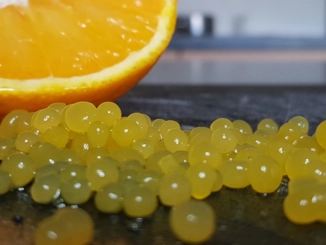
Prepare an orange caviar
Use molecular chemistry to create foods with unexpected shapes. Do you think making orange juice beads is impossible? This is without counting on the properties of Agar, a natural molecule capable of gelling all liquids. Transform yourself into a molecular chemist to surprise your friends with your edible creations. […]

